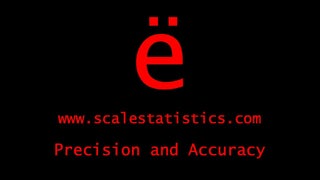One-sample t-test
One-sample t-tests compare an observed mean to a hypothesized value in a given population
The one-sample t-test is used to answer questions about the difference between the expected or hypothesized mean value of a continuous variable and the observed mean value of a continuous variable. When using a one-sample t-test, researchers hypothesize a mean value they expect a given population will possess. Then, they collect data from that population of interest to see if the observed mean is statistically different from the hypothesized mean.
For instance, let's say researchers believe that the majority of households in the United States have at least two televisions. They collect a representative sample from the general population and find that on average there are four televisions. This difference of two televisions between what they expected (M = two televisions per household) and what the actual value (M = four televisions per household) may be statistically significant when using a one-sample t-test.
The most important part of using a one-sample t-test is to state the hypothesis for the expected mean value in an a priori fashion.
For instance, let's say researchers believe that the majority of households in the United States have at least two televisions. They collect a representative sample from the general population and find that on average there are four televisions. This difference of two televisions between what they expected (M = two televisions per household) and what the actual value (M = four televisions per household) may be statistically significant when using a one-sample t-test.
The most important part of using a one-sample t-test is to state the hypothesis for the expected mean value in an a priori fashion.
The steps for conducting a one-sample t-test in SPSS
1. The data is entered in a between-subjects fashion.
2. Click Analyze.
3. Drag the cursor over the Compare Means drop-down menu.
4. Click One Sample T Test.
5. Click on the continuous outcome variable to highlight it.
6. Click on the arrow button to move the variable into the Test Variable(s): box.
7. In the Test Value: box, enter the a priori hypothesized mean value that researchers expect to occur.
8. Click OK.
2. Click Analyze.
3. Drag the cursor over the Compare Means drop-down menu.
4. Click One Sample T Test.
5. Click on the continuous outcome variable to highlight it.
6. Click on the arrow button to move the variable into the Test Variable(s): box.
7. In the Test Value: box, enter the a priori hypothesized mean value that researchers expect to occur.
8. Click OK.
The steps for interpreting the SPSS output for a one-sample t-test
1. In the One-Sample Statistics table, the observed mean and standard deviation are presented.
2. In the One-Sample Test table, look under the Sig. (2-tailed) column for the p-value that is interpreted.
If the p-value is LESS THAN .05, then the observed mean is significantly different than what researchers hypothesized or expected.
If the p-value is MORE THAN .05, then the observed mean is NOT significant different that what researchers hypothesized or expected.
2. In the One-Sample Test table, look under the Sig. (2-tailed) column for the p-value that is interpreted.
If the p-value is LESS THAN .05, then the observed mean is significantly different than what researchers hypothesized or expected.
If the p-value is MORE THAN .05, then the observed mean is NOT significant different that what researchers hypothesized or expected.
Click on the Download Database and Download Data Dictionary buttons for a configured database and data dictionary for a one-sample t-test.
Hire A Statistician
DO YOU NEED TO HIRE A STATISTICIAN?
Eric Heidel, Ph.D., PStat will provide you with statistical consultation services for your research project at $100/hour. Secure checkout is available with Stripe, Venmo, Zelle, or PayPal.
- Statistical Analysis on any kind of project
- Dissertation and Thesis Projects
- DNP Capstone Projects
- Clinical Trials
- Analysis of Survey Data
